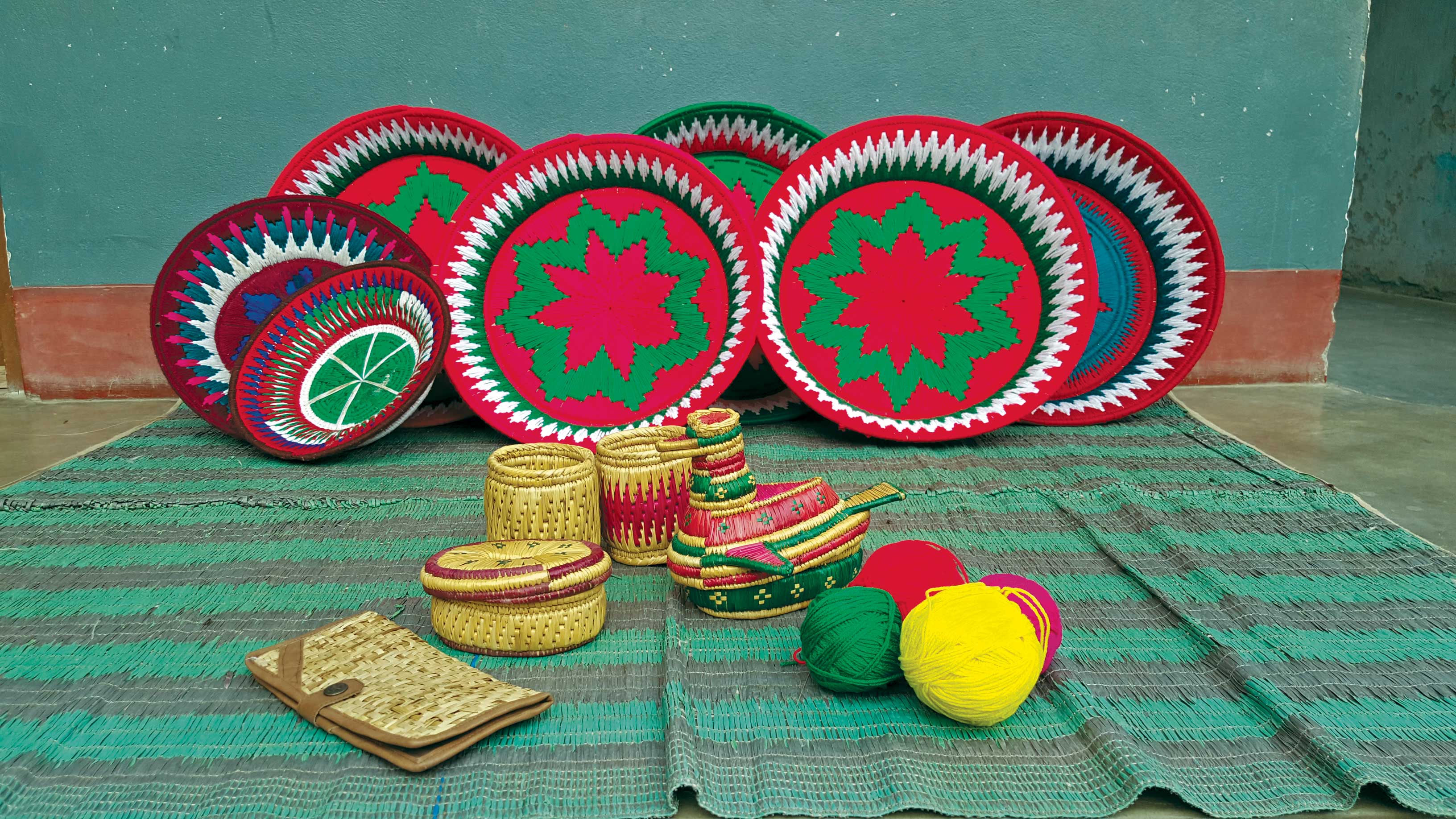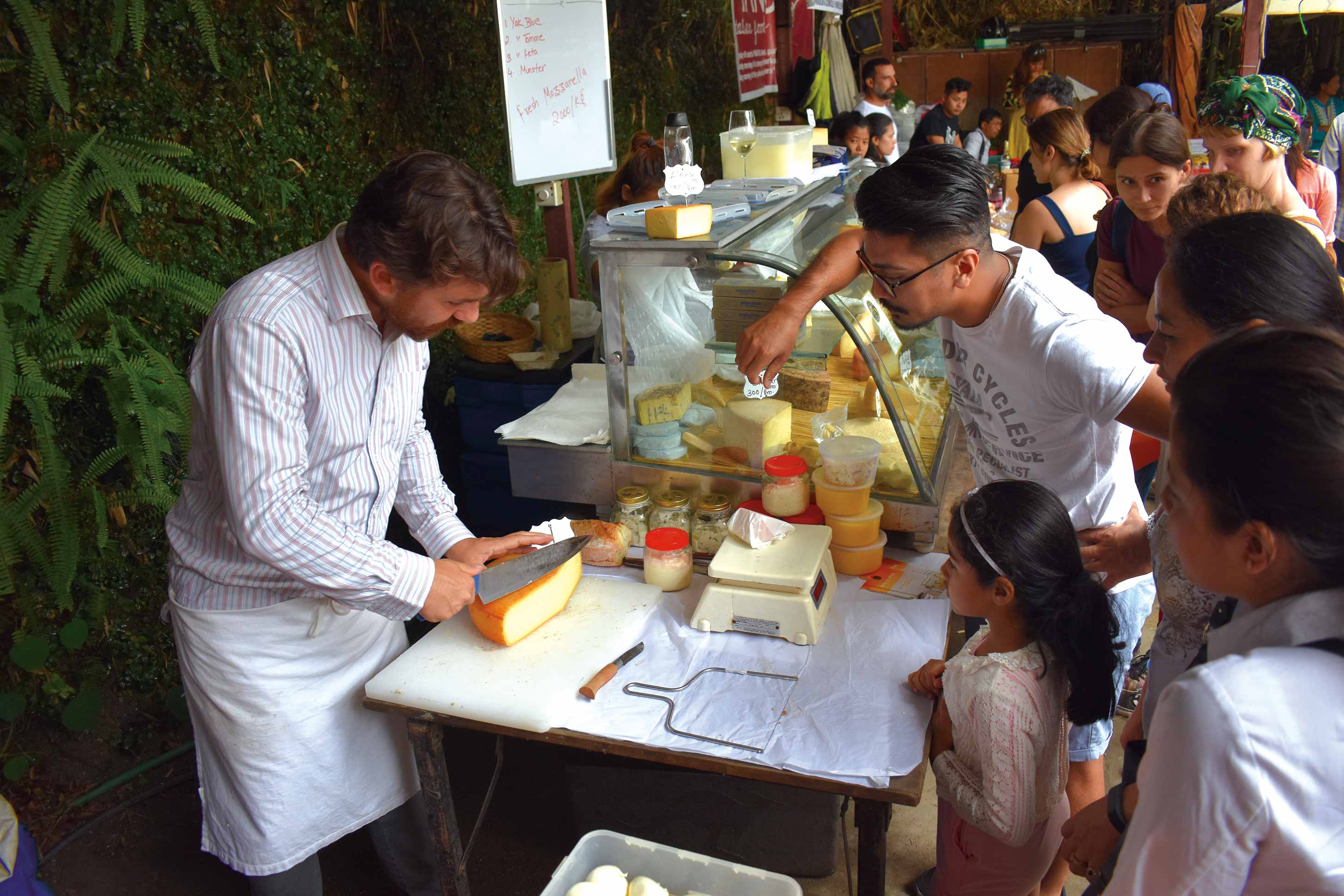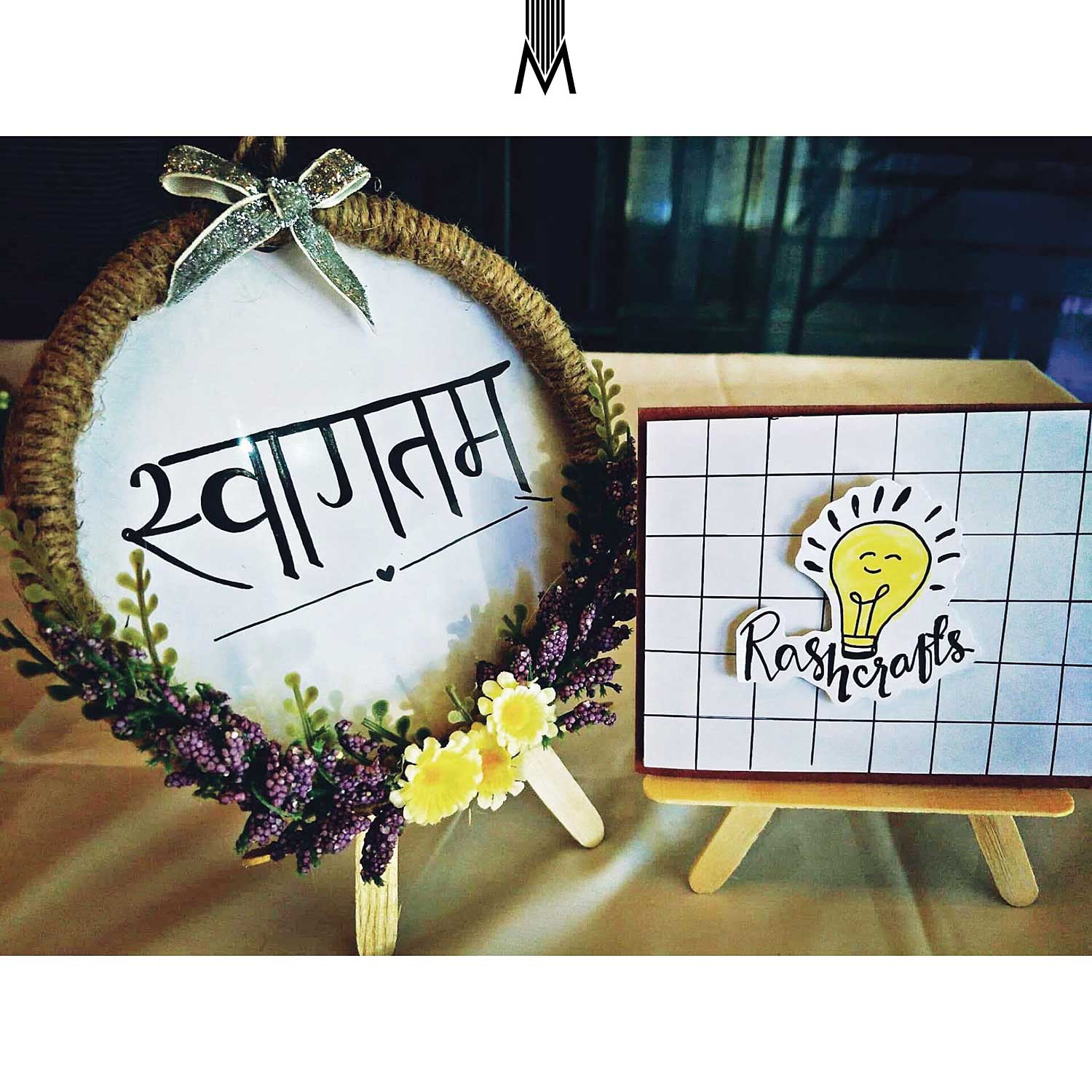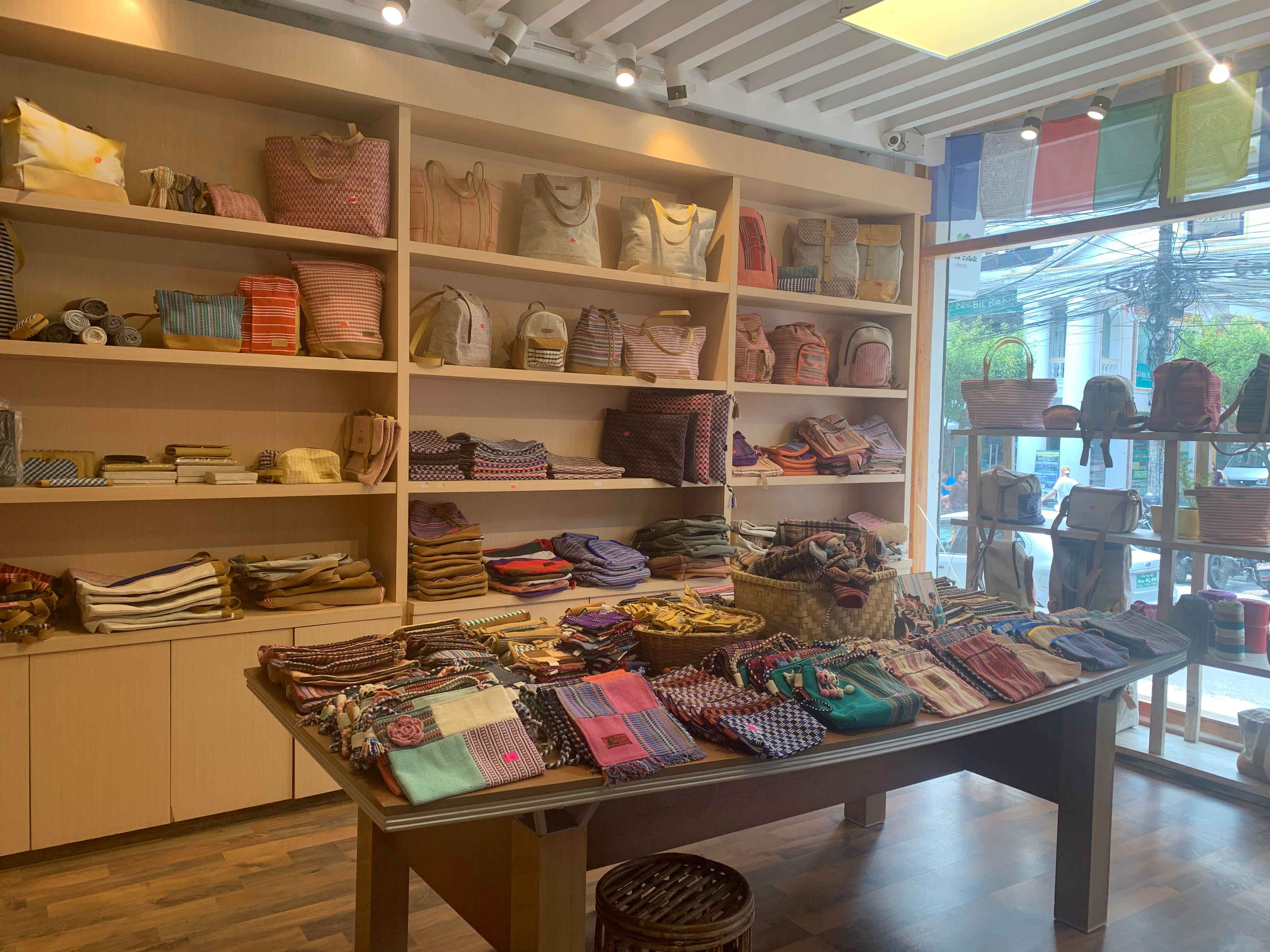
There’s a basket on a table in my living room. It’s woven of straw, in two-tone natural colors, with a close fitting lid. If you look inside, along with the other bits and bobs I keep in it, you’ll find a small strip of masking tape with the name Bhagwati written on it in felt-tip pen. It was on the outside of the basket when I bought it, but I stuck it to the inside soon after to make sure that I wouldn’t lose it.
Bhagwati, you see, is the person who made my basket. But let me take you back a little.
Almost exactly a year ago, in March 2019, I had the pleasure of attending the International Scientific Committee meeting organized by UNESCO in Lumbini. On the last day, we visited the Kapilvastu Museum in Tilaurakot, Kapilvastu, where in addition to the fascinating exhibits, our group enjoyed local cultural dances, children’s artwork and booths—all of which displayed local products—that had been set up on the museum grounds. One of these stalls was that of the Hariyali Hastakala Women’s Group, and in addition to the products displayed for sale—baskets, vases, platters, seating mats, and more—three local woman sat in the rear, colorfully dressed, deftly weaving, piles of straw next to them. It made me stop and watch, blown away by their competence and speed, how easy they made it look though I knew it had to have taken much time and practice to gain that kind of skill.

.jpg)
I’ll be honest; I’ve seen this style of woven goods many, many times in Kathmandu and have never once been interesting in buying any of them for myself, but in this context and environment, I found myself appreciating them in a whole new light. I learned that the Hariyali Hastakala Women’s Group, a self-managed Tharu community group from the village of Barkalpur, was established in 2003 as a way of providing low-interest loans and assisting villagers in need, and that they have been making and selling baskets since 2014. Their 29 members (as of that time) had begun teaching women from other villages their basket-weaving know-how, too.
As a fellow conference attendee enthusiastically filled a large empty grain sack with her chosen baskets, I selected two—one for me and one for a friend. I was informed that the particular baskets which I’d picked were intended for holding chapattis or rotis, and while I can see how they’d be perfect for that task, I unfortunately have yet to fill mine with a pile of warm flatbread.
Instead, it lives in my living room, where it’s a constant reminder to me that the story behind a product can sometimes be even more compelling than the object itself, imbuing it with a significance it would not otherwise possess. Bhagwati’s beautifully woven basket is a reminder of that—and of her—even though we’ve never met. It’s something I try to carry with me in the stories we tell here in these pages, about the things that are made in Nepal: they’re a piece of their talented makers, and we should remember and celebrate how lucky we are to have them in our homes, and try our best to do them and their stories justice, however we can.

Cultural Studies Group of Nepal: Insight from those who really know their stuff
If you are already wise to the ways of CSGN, feel free to skip to...










